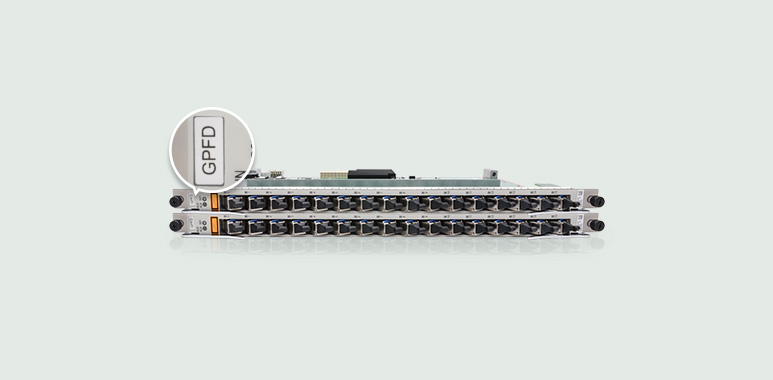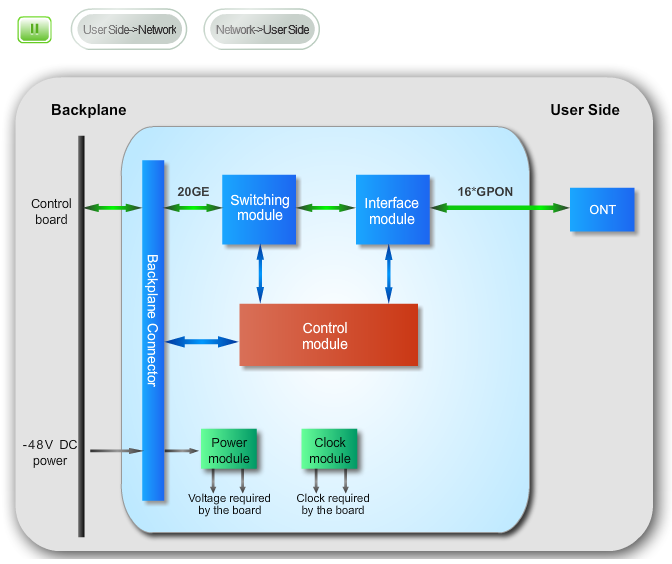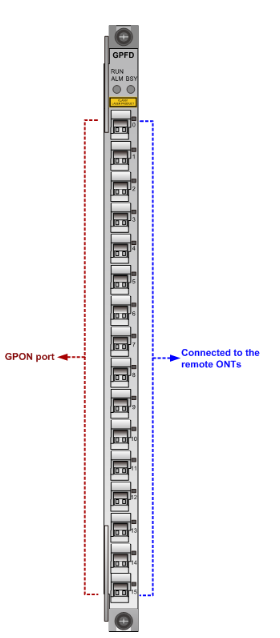
There are always customers asking about Huawei GPON boards differences. For example: What’s the differences between H802GPFD, H805GPFD, and H806GPFD?
The article will tell us some differences among them.

1.From version:
H802GPFD, H805GPFD, and H806GPFD stand for different versions.“H802” version, “H805” version, and “H806” version. The order from the old to new is H802GPFD> H805GPFD > H806GPFD
2.From Benefits:
H802GPFD, H805GPFD, and H806GPFD same benefits:
High density and energy saving
High density and low power consumption, supporting 2048
access users
High reliability
Chip-level type B protection (single-homing and dual-homing) and
type C protection (single-homing and dual-homing) switching
Real-time rogue ONU detection and isolation, ensuring stable
service running
Efficient OAM
Variable-length of OMCI, improving upgrade efficiency and
reducing break off time
A maximum distance difference of 40 km between two ONUs
under the same PON port (board capability), simplifying network
planning
External Interfaces
16 GPON ports with SFP optical modules:
l Max. split radio:
Ø Class B+: 1:64
Ø Class C+/C++: 1:128
H805GPFD and H806GPFD benefits, but H802GPFD without:
High-value services
4-level HQoS, improving user experience
9216 jumbo frames, greatly improving transmission efficiency
3.Data Comparison:
| H802GPFD | H805GPFD | H806GPFD | |
| Forwarding capability |
40 Gbit/s | 40 Gbit/s | 40 Gbit/s |
| T-CONTs per PON port |
1024 | 1024 | 1024 |
| Service flows per PON board |
16368 | 16368 | 16368 |
| Maximum frame size |
2004 bytes | 2004 bytes 9216 bytes (jumbo frame enabled) |
2004 bytes 9216 bytes (jumbo frame enabled) |
| MAC addresses |
16384 | 32768 | 32768 |
| Maximum distance difference between two ONUs under the same PON port (board capability) |
40 km from V800R013 | 40 km from V800R013 | 40km |
| N:1/1:1 VMAC |
Supported | Supported | Supported |
| FEC | Bidirection | Bidirection | Bidirection |
| CAR group | Supported | Supported | Supported |
| IPv6 | Supported | Supported | Supported |
| 4-level HQoS | NO | Supported | Supported |
| Variable-length OMCI | Supported from V800R013 | Supported from V800R013 | Supported |
| ONU-based shaping or queue-based shaping | Supported | Supported | Supported |
| Load sharing | Supported | Supported | Supported |
| High-precision clock time synchronization | Supported | Supported | Supported |
| Type B protection (single-homing and dual-homing) | Supported | Supported | Supported |
| Type C protection (single-homing and dual-homing) | Supported | Supported | Supported |
| Rogue ONU detection and isolation | Supported | Supported | Supported |
| Automatic shutdown at high temperature | Supported | Supported | Supported |
| Automatic shutdown of an idle port | Supported | Supported | Supported |
| 1588v2 | Supported | Supported | Supported |

From the above data, we can see that although they are all GPFD 16 port GPON board, but different versions, the parameters are still different, especially MAC addresses and 4-level HQoS.
The current mainstream version is the H805 version, when you are buying a product, you can ask the seller to indicate the version. Some sellers do not inform the clear version, causing customers to receive very old H802GPFD, etc. Although the price is low, the product version is old and cannot meet customer needs.
If you have any questions, please do not hesitate to contact: csd@telecomate.com

Leave a comment